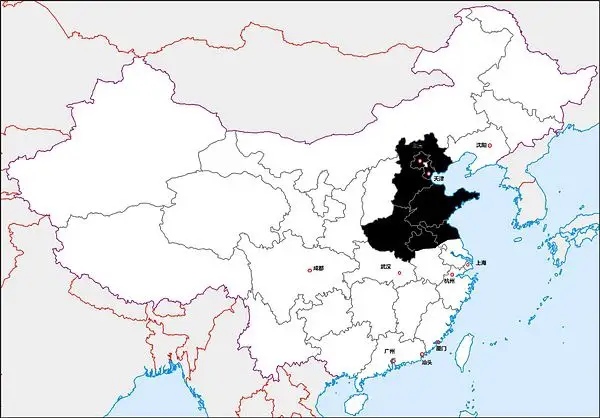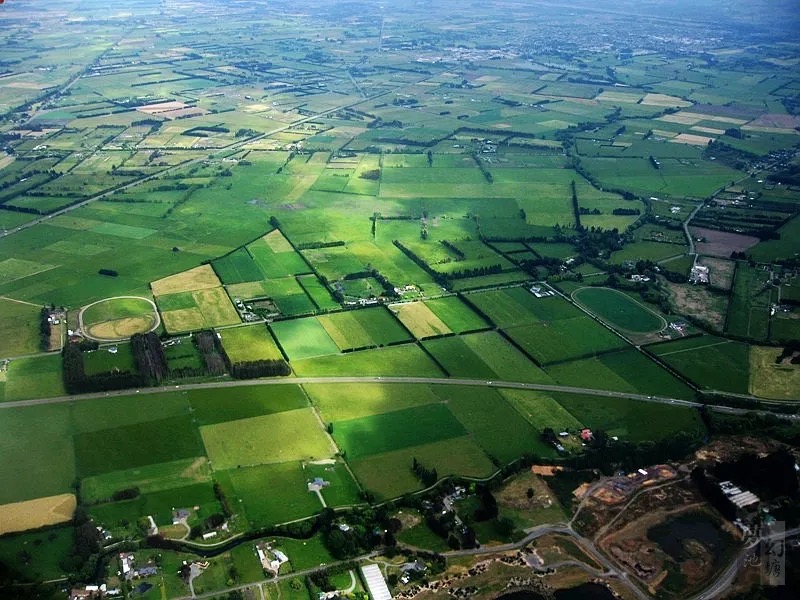China is known for its large population, various tourist attraction sites, and its long history of invention. The north china plain is one of the most famous and densely populated regions in China inhabited by about 400 million people. Beijing, which is the most visited place in China as well as its capital city is located in the north china plain. China’s number one tourist attraction which is the Great Wall of China is also located in this region. This area is known as the “Land of the Yellow Earth” because the ground is covered in yellow limestone silt carried by the wind from the Gobi Desert to the North China Plain.
What is the north china plain?
The North China Plain is a large-scale down-faulted rift basin that was created during the late Paleogene and Neogene and later altered by Yellow River deposit accumulation. The plain has a square area of about 400,000 square kilometers. It is gently rolling terrain, as the name implies. Floods can be quite common in this region and once water collects, it can lead to the formation of lakes and large pools due to a lack of drainage. These large pools and shallow reed-filled lakes are beneficial to weaving and thatching as well as fish, snails, and migratory birds. Temperatures in the summer and winter can be extreme. Dust storms are also common in the north china plain. Due to the unpredictable nature of the weather, good harvests are only possible three out of every five years.
Where is the north china plain located?

The north china plain is located in eastern China. It borders the Yanshan Mountains to the North, the Taihang Mountains to the West, the Dabie Mountains to the South, and the Yellow and Bohai sea to the East.
North China plain history
One of the cradles of Chinese culture was the North China Plain. The earliest agrarian societies and dynasties in China were born in this region. Because there was always food and water access, people used to live in distributed villages rather than concentrated settlements. The main reason for nucleating was to fend off attackers and intruders. The Taihang Mountains’ foothills are home to some of the earliest archaeological “cities,” where there are mineral resources and reasonable water supplies available year-round. The north plain generally lacks mountains and has far fewer rivers. As a result, in the past communication by horse was quick within the plain, and the plain’s spoken language was relatively uniform, in contrast to southern China’s plethora of languages and dialects. Another interesting fact is that the construction of The Great Wall of China was to protect those who had settled in this region from nomadic or semi-nomadic tribes. These tribes originated from the deserts of Dzungaria, North East China, and Inner Mongolia. They invaded North china Plain in pursuit of its fertile soils which had merged with their region.
Why was north china plain the center of the Chinese civilization?
The early farmers in China chose to settle in the north china plain due to its long history of agricultural development. The fertile soils, smooth terrain, and hot and wet summers guaranteed the growth of enough crops to feed the large population present in the region. The north china plain is also easily accessible since it is crisscrossed by railways. This ensures that the crops are transported smoothly to the various markets or industries. Mining in the north china plain is also highly developed as well as other industries. As mentioned earlier, the north plain is mountain-free and has few rivers which fasten communication within the plain. Therefore, it is no surprise that due to the ease of communication, China’s political center is located here.
What is the elevation of the north china plain?

The north china plain covers an area of about 409,500 square kilometers and it has an elevation lower than 50 meters (160 ft.).
North china plain population
The north china plain has a very high population density of about 400 million. The plain has very fertile soils suitable for growing various crops thanks to the Yellow, Hai, and Huai rivers which form sedimentary deposits excellent for agriculture. Therefore, it’s no surprise that many people would want to settle there. The climate in the plain is also fairly mild.
North china plain cities
The north china plain has several cities. Beijing which is the capital of China is located on the northeast edge of the plain. Tianjin city is also located in this region. It Is located on the northeast coast and it acts as a commercial port and an important industrial city. Zhengzhou, which is the capital of Henan province, and Jinan which is the capital of Shandong province are located along the banks of the Yellow River. Other provinces include Hebei, Anhui, and Jiangsu.
The north china plain winter temperature Fahrenheit
Winters in the north china plain are long and cold often below zero lasting from late November to March. Temperatures are frequently below zero, and snowfall is common, particularly in the far north. The Harbin Ice & Snow Festival, as well as plenty of skiing, are popular winter activities in the north. If you intend on visiting this region during the winter, you can pack some layers of warm clothes from home or you can purchase some winter gear in the Beijing markets. In the winter, the Chinese wear long underwear and many layers, so you’ll be able to find everything you need.
Why is the north china plain important?
The north china plain serves as one of the most important regions in China due to its agricultural benefits. The region has fertile soils which favor the growth of various crops such as maize, millet, sorghum, wheat, sesame seeds, peanuts, cotton, and vegetables. It is China’s primary producer of sorghum, millet, maize, and cotton. Agriculture isn’t the only reason that the north china plain is one of the most important regions in the country. Shandong’s Shengli Oil Field is an important petroleum base in the plain’s eastern region. The north china plain is also home to the Yellow River.
North China Plain Population
According to demographers, the North China Plain, also known as Yellow Plain, has an estimated 110 million people. Despite a slight slump in China’s overall population growth, the staggering figure makes this plain one of the world’s most densely populated areas. The region has fertile yellow soil, the Yellow River, and oil fields that perhaps spurred such population growth, particularly for the Han.
Conclusion
From the above post, it is evident that the north china plain is one of the most important regions in China. If you intend on visiting China, you can put the north china plain on your bucket list. The visit will be worth it.
